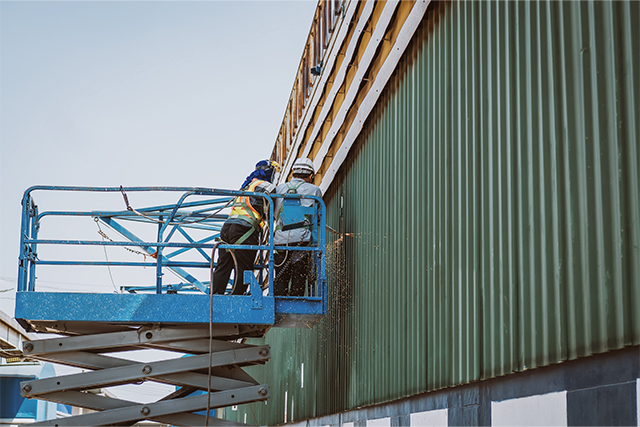Scissor lift tables are versatile and essential equipment used in various industries for lifting and positioning heavy loads. They provide a safe and efficient solution for tasks that involve material handling, assembly, maintenance, and more. However, choosing the right scissor lift table can be daunting due to the wide range of options available in the market. In this comprehensive buying guide, we will explore the key factors to consider when purchasing a scissor lift table in the United States.
- Types of Scissor Lift Tables:
Manual Scissor Lift Tables:
- Ideal for light-duty applications.
- Operated by hand or foot pumps
- Suitable for smaller loads and occasional use
Electric Scissor Lift Tables:
- Powered by electricity
- Offer smoother lifting and lowering operations
- Suitable for medium to heavy-duty applications
Hydraulic Scissor Lift Tables:
- Use hydraulic systems for lifting and lowering
- Provide higher lifting capacities
- Suitable for heavy-duty and industrial applications
- Load Capacity and Platform Size:
Determine the Required Load Capacity:
- Calculate the maximum weight the scissor lift table will need to handle.
- Consider any future increase in load requirements.
Assess Platform Size:
- Ensure that the platform dimensions are suitable for your specific applications.
- Take into account the size and shape of the materials being handled.
III. Lifting Height and Range:
Evaluate Lifting Height Requirements:
- Determine the maximum height needed for your operations.
- Consider any vertical space limitations in your workspace.
Understand the Lifting Range:
- Check the minimum and maximum lifting heights offered by the scissor lift table.
- Ensure that the range covers your desired height requirements.
- Mobility and Maneuverability:
Consider the Type of Mobility:
- Stationary scissor lift tables are fixed and provide stability for specific work areas.
- Mobile scissor lift tables come with wheels for easy transportation between locations.
Assess Maneuverability Features:
- Look for scissor lift tables with swivel casters for enhanced manoeuvrability.
- Check if the wheels have brakes for secure positioning during use.
- Safety Features:
Safety Standards and Certifications:
- Ensure that the scissor lift table complies with relevant safety standards, such as OSHA and ANSI.
- Look for safety certifications to ensure the equipment meets quality and safety requirements.
Safety Mechanisms:
- Check for features like safety bars, emergency stop buttons, and overload protection.
- Verify if the scissor lift table has a stable base for secure operation.
- Maintenance and Durability:
Ease of Maintenance:
- Consider scissor lift tables with accessible components for easy maintenance and repairs.
- Look for user-friendly maintenance instructions and the availability of spare parts.
Durability and Construction:
- Evaluate the materials used in the construction of the scissor lift table.
- Choose models with robust frames and sturdy platforms to ensure longevity.
VII. Cost and After-Sales Support:
Compare Prices:
- Research different brands and models to compare prices.
- Consider long-term value instead of solely focusing on the initial cost.
After-Sales Support:
- Check if the manufacturer provides warranty coverage and support services.
- Look for readily available customer assistance and spare parts availability.
Question & Answers:
- Can I use a manual scissor lift table for heavy-duty applications?
Manual scissor lift tables are generally suitable for light-duty applications. For heavy-duty tasks, it is recommended to opt for an electric or hydraulic scissor lift table that offers higher lifting capacities.
- How do I determine the required load capacity for a scissor lift table?
To determine the required load capacity, calculate the maximum weight of the materials or equipment you will be handling. Ensure that the scissor lift table’s capacity exceeds this weight to account for any future load increases.
- Are scissor lift tables suitable for outdoor use?
Yes, there are scissor lift tables designed specifically for outdoor use. These models typically feature weather-resistant components, durable construction, and enhanced stability to withstand outdoor conditions.
- What safety features should I look for in a scissor lift table?
Some important safety features to consider included safety bars, emergency stop buttons, overload protection, and stable bases. Additionally, ensure that the scissor lift table complies with relevant safety standards and possesses appropriate certifications.
- How often do scissor lift tables require maintenance?
The maintenance requirements may vary depending on the brand and model. It is advisable to follow the manufacturer’s maintenance instructions. Regular inspections, lubrication, and component checks are usually recommended to keep the scissor lift table in optimal condition.
Conclusion:
Choosing the right scissor lift table is crucial for ensuring efficient and safe material handling operations in various industries. By considering factors such as load capacity, lifting height, mobility, safety features, maintenance, and after-sales support, you can make an informed decision. Remember to evaluate your specific requirements and compare different options before making a purchase. With this comprehensive buying guide, you are now equipped to find the perfect scissor lift table for your needs in the United States.


















![TamilMV Proxy List Top 30+ [Unblock TamilMV Sites] TamilMV Proxy Unblock](https://technewsgather.com/wp-content/uploads/2023/04/17825836_SL-121019-25870-14-1-100x70.jpg)